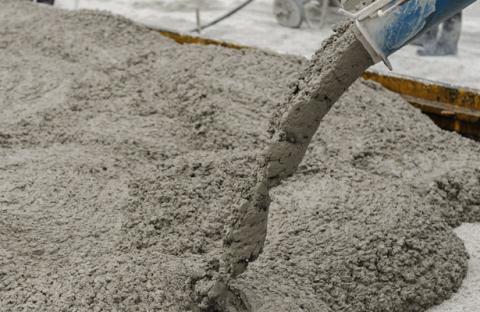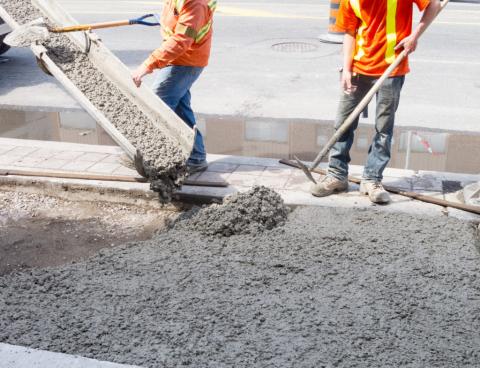+1(209) 348-9544
order@myessayservices.com
+1(209) 348-9544
order@myessayservices.com
![]() Are you in High School, College, Masters, Bachelors or Ph.D and need someone to help in your homework? All you need is to ask for research paper help written by a specialist in your academic field. When you buy an essay online from My Essay Services, we offer you an original, nil plagiarized and unique paper written by a dedicated writer who is PhD or Masters qualified. MyEssayServices.com is an experienced service with over 9 years experience having delivered over 83,000 essays over the years.
Are you in High School, College, Masters, Bachelors or Ph.D and need someone to help in your homework? All you need is to ask for research paper help written by a specialist in your academic field. When you buy an essay online from My Essay Services, we offer you an original, nil plagiarized and unique paper written by a dedicated writer who is PhD or Masters qualified. MyEssayServices.com is an experienced service with over 9 years experience having delivered over 83,000 essays over the years.

AIM
The main objective of this experiment is to determine the 28 day compressive strength and indirect compressive strength of the hardened specimens of concrete.
INTRODUCTION
 Being one of the most widely used building material, concrete compressive and tensile strengths are the most important concrete performance measures used in structural design. Compressive strength is a measure of the ability of concrete to resist crushing loads. The results of this test are mainly used establish that the delivered concrete mixture meets the specified strength requirements of a given project specification. Concrete structures are subjected to tensile stress from applied loading and other kinds of effects, which can result in tensile cracking.
Being one of the most widely used building material, concrete compressive and tensile strengths are the most important concrete performance measures used in structural design. Compressive strength is a measure of the ability of concrete to resist crushing loads. The results of this test are mainly used establish that the delivered concrete mixture meets the specified strength requirements of a given project specification. Concrete structures are subjected to tensile stress from applied loading and other kinds of effects, which can result in tensile cracking.
The tensile strength is usually about 10-20% of the compressive strength. Splitting test is an indirect standard test method used to determine tensile strength of a concrete specimen. Plywood strips placed between the loading platens on the compression machine and specimen allow for uniform distribution of the applied load, and also reduces the compressive stresses at the point of the applied load.
The compressive strength of concrete is measured by breaking cylindrical specimens of concrete in a compression testing machine. The specimens can also be cubic, with cubes measuring 150mm by 150mm by 150mm or 100mm by 100mm by 100mm, depending on the aggregate size used.
In this lab experiment, two compressive tests one splitting tests were performed on cylinders specimens from batch A and D.
PROCEDURES
Apparatus:
-Compression testing machine
[A] Compression Test
Specimens:
Cylinder diameter (d) = 100mm
Cylinder height (h) = 200mm
Procedure:
Two cylinder specimens were cast and cured to attain 28 day strengths. After wiping the specimen to remove excess water, it was placed vertically on the platform of the compression machine. A load of 160kN/min was then applied uniformly without shock until the specimen failed. The failure load (Pmax) was recorded down. The failed sample was inspected to make detailed observations about the failure mode. The steps above were repeated for the second specimen.
[B] Splitting test
Specimens:
-Cylinder diameter (d) = 150mm
-Cylinder height (h) = 300mm
Procedure:
The 28 days concrete specimens cured under standard conditions of temperature and humidity were set in a splitting apparatus. The load was then applied diametrically and uniformly along the cylinder length at a rate of 106kN/min until it failed along the vertical diameter, then the failure load attained (Pmax.) recorded. The failed sample was inspected to make detailed observations about the failure mode.
RESULTS AND DISCUSSION
Compression Test Results
Batch A Cylinder 1 Cylinder 2
Failure Load Pmax (kN) 95 123.2
(MPa) 12.10 15.69
For cylinder 1:
Compressive strength (Pmax)
For cylinder 2:
Compressive strength
Average =
Batch D Cylinder 1 Cylinder 2
Failure Load Pmax (kN) 166.3 139.5
(MPa) 21.18 17.76
For cylinder 1:
Compressive strength (Pmax in N/ Area in mm2)
For cylinder 2:
Compressive strength
Average =
 There are certainly a number of possible reasons as to why the concrete strengths may vary within a particular batch. One such reason is air content in the batch. Controlling air content in a concrete mixture is probably hard to control. High air content reduces concrete strength. Concrete strength reduces by about 4-5% with a 1% increase in air content. Personal errors can sometimes be a culprit in a concrete mix, which may lead to varied strength for the same batch. Routine inspections and paying attention during the batching process can reduce errors due to handling.
There are certainly a number of possible reasons as to why the concrete strengths may vary within a particular batch. One such reason is air content in the batch. Controlling air content in a concrete mixture is probably hard to control. High air content reduces concrete strength. Concrete strength reduces by about 4-5% with a 1% increase in air content. Personal errors can sometimes be a culprit in a concrete mix, which may lead to varied strength for the same batch. Routine inspections and paying attention during the batching process can reduce errors due to handling.
Splitting Strength Test Results
Batch D Batch A
Failure Load Pmax (kN) 231.8 231.7
(MPa) 3.279 3.278
For batch D:
Tensile splitting strength,
For batch A:
Tensile splitting strength,
Theoretical Tensile splitting strength values
Batch A:
= 1.491
Batch D:
= 1.765
The indirect tensile stress generated by the poison’s effect applied causes the concrete specimens to split along the vertical plane into two halves. An element along the vertical diameter of the specimen is subjected to both vertical compressive stress as well as horizontal stress due to the applied compressive load. As a result of this loading condition, a high compressive strength is produced below the loading points immediately. The larger portion of the specimen that corresponds to its depth is subjected to a tensile strength that is uniform and acts horizontally. Under this test, the cylinder specimens failed by breaking into two halves.
The experimental splitting values are higher compared to theoretical values. These differences are brought about by a number of departures from the theoretical splitting. First, the theory assumes that the concrete material is homogenous and linear elastic, which is not. Second, the load is distributed within a plywood strip rather than being applied along a line. Loading on the strip produces large compressive stresses that lie perpendicular to the diametric plane under the loading strips. The specimen diameter, length and shape, the bearing strips, the specimen moisture condition, and the loading rate all have an effect on the experimental splitting strength.
CONCLUSION
Compressive stress and tensile stress are the two most important concrete properties that have to be established in the initial design of concrete structures. The tests for this properties are performed mostly after 28 days from the day of casting. However, the tests can also be done at 1, 3, 7, 14 or 56 days. The 28 day age is preferred because at this age, concrete has achieved about 98% of its strength. The average compressive strengths of the specimens are 13.895 MPa and 17.76 MPa in batch A and D respectively. The results of the compressive strength are used to determine if the concrete mixture meets the specified strength in a project specification. The experimental tensile strengths are 3.279 MPa and 3.278 MPa for batch A and D respectively. The tensile strength test is a model of how a concrete beam will be loaded.
Reference
Kett, Irving. Engineered Concrete: Mix Design and Test Methods, Second Edition. New York: CRC Press, 2009.
Sandstone
 Sandstone can be described as a sedimentary rock that is composed of sand-sized grains of mineral, organic material. It also includes a cementing substances that binds the sand together and at times it may contain a matrix of clay size particles that occupy the spaces between the sand grains (Price, 2012). It is critical to realize that indeed the sandstone is one of the most common types of sedimentary rock and it is often found in sedimentary basins throughout the world (Norman, 2014). The Sandstones can be said to be clastic in their origin. They are often formed from cemented grains that may either be fragments of pre-existing rock on even at times mono-minerally crystals.
Sandstone can be described as a sedimentary rock that is composed of sand-sized grains of mineral, organic material. It also includes a cementing substances that binds the sand together and at times it may contain a matrix of clay size particles that occupy the spaces between the sand grains (Price, 2012). It is critical to realize that indeed the sandstone is one of the most common types of sedimentary rock and it is often found in sedimentary basins throughout the world (Norman, 2014). The Sandstones can be said to be clastic in their origin. They are often formed from cemented grains that may either be fragments of pre-existing rock on even at times mono-minerally crystals.
There is often cement binding on the grains together. It is important to realize that the formation of sandstone often involves two main stages. Firstly, a layer of sand accumulates as the main result of sedimentation, and this might be from either water or the air. In most cases, sedimentation often occurs by the sand settling out from suspension, and this ceases to be rolled or bounced along from the bottom of the body of water or even ground surface (Norman, 2014). Finally, once it has accumulated, the sand often becomes sandstone when it is compacted by a pressure of overlying deposits, and they are cemented by the precipitation of minerals within the pore spaces that exists between the sand grains (Price, 2012). It is critical to realize that the cementing materials in most instances are calcium carbonate and silica that is derived from dissolution or even from the alteration of the sand after it is buried.
It is important to understand that the environment where the rock is found is especially important when it comes to the resolution of the resulting sandstone, which in finer detail includes the grain size, the composition and finer detail (Jankowski, 2013). The sandstone can be found in terrestrial environments such as a deserts, and alluvial fans. It can also be found in aquatic environments such as tidal flats, beaches, and storm deposits.
The composition of sandstone often includes quartz or feldspar, and at times lithic fragments are common. It is important to realize that indeed the quartz framework grains often dominate minerals in the clastic sedimentary rocks, and this is because they have exceptional physical properties such as chemical stability and hardness (Price, 2012). These physical properties often allow the quartz grains to survive to multiple recycling events which also allows the grains to display some degree of rounding.
The sandstone deposits can often create a beautiful part of the natural environment, and they often take part in breath-taking views at many preserves and natural parks (Norman, 2014). The sandstones deposits of, for example, Grand Canyon often provide millions of visitors spectacular views. Further, it is critical to realize that indeed mined sandstone can be cut, carved and polished for many uses. It is often used as ornamental rocks for buildings, gravestones, monuments and tiles (Price, 2012). The sandstone has also been used in the provision of silica for glass production. Some minerals ores are found in sandstone. For example, uranium concentrates have been found in many sandstone deposits, and this has a lot of economic values.
Granite
Granite can be described as light colored igneous rock with grains that are large enough to be visible with an unaided eye. Granite is the best known igneous rock. In fact, many people recognize granite because it the most common igneous rock that is found at Earth’s surface and this is because granite is used to make many objects that people encounter in daily life (Jankowski, 2013). Granite an igneous rock with at least 20% quartz and around 65% alkali feldspar by volume. Granite has geochemical origins. They are formed by crystallized magmas that have compositions at or near eutectic point (Price, 2012). The magmas often evolve to the eutectic because of the igneous differentiation and also because they represent different low degrees of partial melting. The fractional crystallization often serves to reduce a melt.
The process often operates regardless of the origin of the parental magma to the granite, and this is regardless of the chemistry (Norman, 2014). Granitization states that granite is formed in place by extreme metasomatism by fluids bringing elements such as potassium and removing others such as calcium to transform the metamorphic rock into granite. It is critical to realize that indeed the production of granite by metamorphic heat is difficult. However, it has been observed to occur in granulite and amphibolites terrains (Jankowski, 2013).
Granite often consists of coarse grains of quartz which are around 10-50%, potassium feldspar, as well as sodium feldspar. These minerals often make up more than 80% of the rock. Other common minerals such as biotite and hornblende have traces in granite. The chemical composition of the rock often includes 70-77% silica, 12% alumina, 3% potassium oxide, 1% lime and traces of iron, magnesia and titania.
Granite is used in the curving of sculpture and memorials and especially when it comes to gravestones and memorials. Granite is also used as a dimension stone and as flooring tiles in public and commercial buildings and monuments (Price, 2012). Further, engineers have often used polished granite surface plates to establish a plane of reference, and this is because granite is relatively impervious and inflexible.
Coal
Coal is a combustible black or sometimes brownish-black sedimentary rock that usually occurred in rock strata. The harder forms such as the metamorphic rock occur because of later exposure to an elevated temperature as well as pressure.
At various time in the geological past of the Earth, it had dense forests in low-lying wetland areas. It is important to realize that indeed due to natural processes such as flooding, these forests are often buried under the soil (Price, 2012). The soil compresses them, and the temperatures rise as they sink deeper. The trapped carbon is buried by sediments, and under high pressure and high temperature, the dead vegetation is slowly converted into coal. The coal contains mainly carbon.
Coal is mainly composed of carbon. However, it has traces of hydrogen, sulfur, nitrogen and oxygen. It is important to realize that indeed this composition may differ in many parts, and this is because of the different heat and pressure (Norman, 2014). Coal is often found in areas where there were forests in the past. It is located in almost every major part of the world.
Coal is primarily used as solid fuel that is used in the production of electric and heat through combustion. It is also used for electricity generation. Further, coal is used in industrial processes as well as the production of chemicals.
Reference
Norman, N. (2014). Box of rocks: Find, understand, collect.
Price, R. A., (2012). Origin and evolution of sedimentary basins and their energy and mineral resources. Washington, DC: American Geophysical Union.
Jankowski, L (2013).Sedimentary rock and their formation. Huntsville, Tex: EVN [distributor.
Browse More Essay Topics 24/7/365 Support 11+ Yrs in Essay Writing Pay for Quality not Quantity Score that A+ Grade
Affordable Papers
Research Paper for Sale
Cheap Research Papers
Buy Term Papers
Buy Research Paper
Write My Paper
Buy an Essay
Cheap Essay Writer
Write my Essay
Thesis Help
Dissertation Help
Paper Writing Service
Pay for Homework
Pay for Research Paper
Do My Essay for Me
Pay for Essay
College Papers for Sale
Do My Homework for Me
College Essays for Sale
Buy Research Papers Online
Buy College paper
Client: "(Berlin, G.K., CA)"
Topic title:"Leadership shortfalls in Blue Chips"
Discipline: "Economics"
Pages: 5, (APA)
" Awesome, the writer delivered it as required by the professor. They also sent me a plagiarism & grammar report Wow!. I was worried about how the essay would turn up but this is exactly what wanted. Thank you and will be back with a longer essay"
Accounting Research Papers
Business Research Papers
Communication Research Papers
Computer Science Research Papers
Economic Research Papers
Film Studies Research Papers
Finance Research Papers
Geography Research Papers
History Essays
Psychology Research Papers
Political Science Research Papers
Nursing Research Papers
Mathematics Essays
Management Essays
Literature Essays
Law Essays
World Affairs Essays
Technology Essays
Sociology Essays
Science Essays
Religion Essays
+1(209) 348-9544
Terms
Privacy
Sitemap
Frequently Asked Questions
0% Plagiarism Guarantee
Money Back Guarantee
Revision Policy
